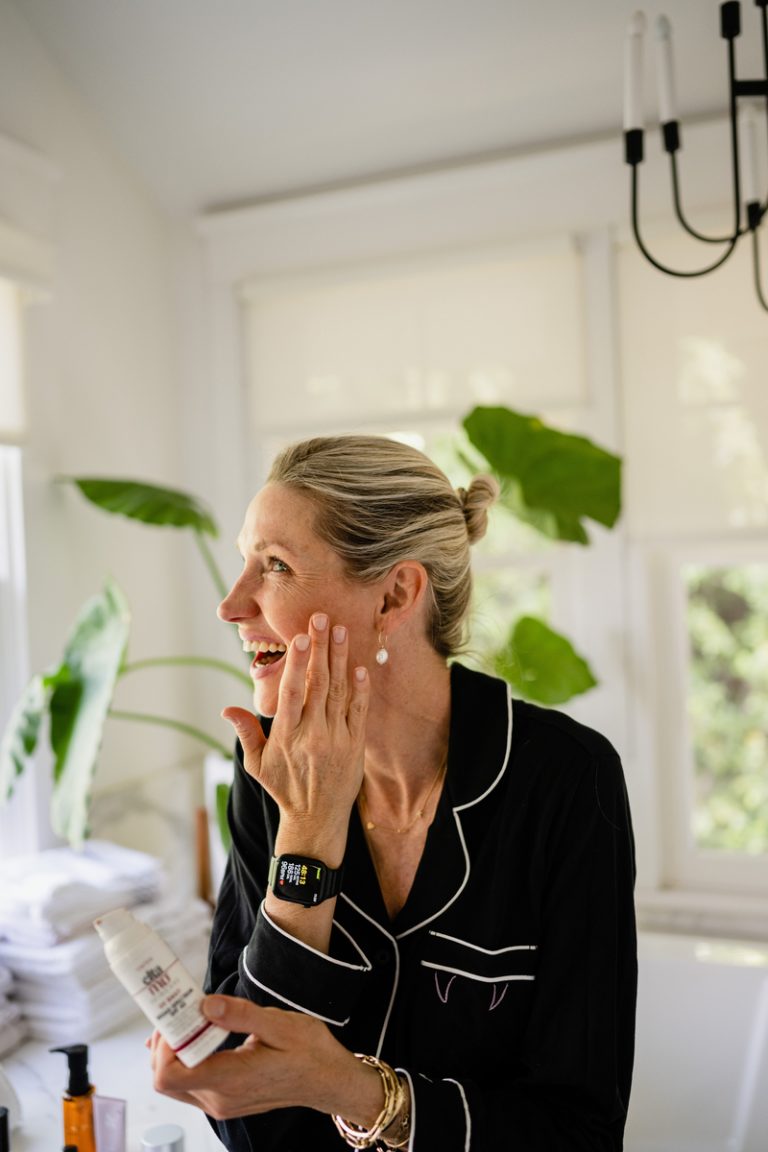
When it comes to the pursuit of flawless skin, we’re living in an exciting time of new treatment options—both at home and in professional settings. Two of our latest faves? Laser therapy and microneedling. They’re some of the hottest skin resurfacing treatments around. But, of course, it’s easy to feel overwhelmed by the seemingly endless products and therapies on the market. And because there’s a whole new world of skincare to discover every day, we always turn to the experts for guidance.
We sat down with Dr. Elizabeth Geddes-Bruce to talk about the differences between microneedling and laser therapy. Below, the board-certified dermatologist breaks down the pros and cons of each, how to effectively combine the two treatments, and everything you need to know about supporting your softest, glowiest skin yet.
Featured image by Teal Thomsen.
Laser Therapy and Microneedling: An Overview
There’s a big difference between laser therapy and microneedling, and it all comes down to how the two treatments work. By design, lasers use light as energy. This allows lasers to have a specific target to treat in the skin, such as broken red veins or brown spots, without damaging surrounding unaffected tissue. It’s a very selective treatment.
Microneedling is the mechanical method of creating thousands of tiny channels of injury all over a treatment area that force the skin to heal. The results are not selective to a specific problem, but you can see improvement in many issues by nature of causing collagen regeneration and skin turnover.
Microneedling is often combined with PRP (platelet rich plasma), which helps to boost results and healing time. It’s referred to as the “vampire facial.” This involves drawing the patient’s blood and spinning it quickly to separate the red blood cells from the yellow plasma, which is full of platelets and growth factors. The plasma portion is applied to the skin during microneedling, or injected directly into the treatment area.
Both treatments are used to heal certain types of cosmetic concerns, such as acne scarring and rejuvenation. While other issues, like broken red blood vessels, really need a laser to fix.
The Pros and Cons of Microneedling
The Pros
A relatively quick recovery time (about a day or two of a light sunburn appearance) and fewer potential side effects. Microneedling is also safe to use on all skin types. If you’re looking to be more proactive about taking care of your skin, microneedling is a quick and easy way to do so without much risk.
The Cons
The results are often subtle. It can take numerous microneedling treatment sessions to achieve the results you desire, and still, some conditions are best treated with a laser.
The Pros and Cons of Laser Therapy
The Pros
In the hands of an experienced physician, laser treatments can often provide quicker, more dramatic, and longer-lasting results than microneedling treatments. If you have a specific problem you would like to address, it may be the case that you are better suited for a laser treatment to meet your goals.
The Cons
When it comes to laser therapy and treatments, greater reward comes with greater risks. Because lasers deliver heat to the skin, we see more side effects (such as temporary darkening or bruising) and longer downtime due to post-treatment swelling and redness. Lasers can also flare certain medical conditions, so it’s important to have a thorough consultation with a professional before diving in.
Can laser therapy and microneedling be used effectively together?
Absolutely! We can target specific issues with a laser and then perform microneedling for all-over skin rejuvenation on the same day. Or, you can alternate treatments on about a monthly basis. It all depends on what you are trying to address.
Who is an ideal candidate to try these treatments?
An ideal candidate feels empowered to ask questions regarding their treatment. They prepare for the procedure and commit to doing their part during recovery. More specifically, patients need to be free of active infections, rashes, or acne in the treatment areas. They also need to avoid sun exposure pre- and post-procedure as this increases side effects.
This post was originally published on January 23, 2020, and has since been updated.



